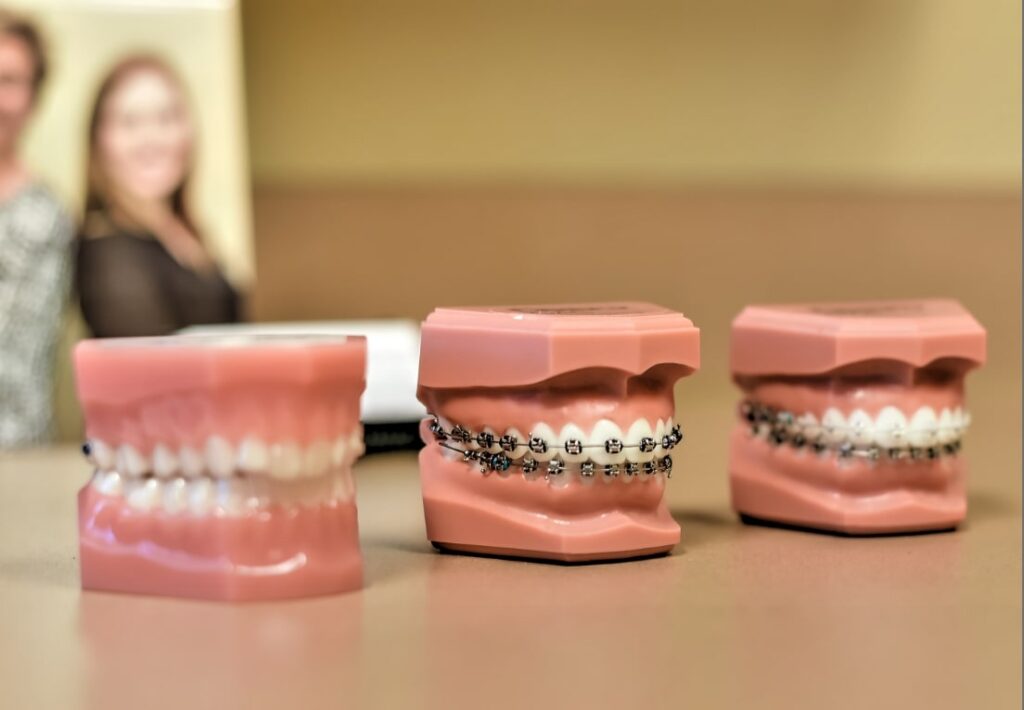Choosing the most effective Cumming Orthodontics for Effective Braces and Aligners Solutions
Choosing the most effective Cumming Orthodontics for Effective Braces and Aligners Solutions
Blog Article
Comprehensive Overview to Orthodontics Treatments for Correcting Oral Imbalances
Understanding the details of each treatment, including their systems, advantages, and potential downsides, is essential in making notified choices concerning one's orthodontic treatment. As we browse with the detailed guide to orthodontic treatments for dealing with dental imbalances, the detailed details of each approach will unfold, losing light on the course toward a functional and harmonious oral placement.
Orthodontic Procedures Overview

Along with standard braces and clear aligners, orthodontists might additionally suggest various other interventions like headgear, palatal expanders, or retainers to resolve particular alignment issues (orthodontics). These procedures are tailored per person's unique demands and might involve a combination of therapies to accomplish the wanted results. Regular adjustments and tracking are crucial parts of orthodontic treatment to ensure development is on track and to make any type of necessary adjustments along the method. By undertaking orthodontic treatments, patients can not only achieve a straighter grin however additionally enhance their total oral health and wellness and feature.
Typical Braces: Just How They Work
When taking into consideration orthodontic therapies for oral misalignments, typical braces attract attention as a tried and true approach for remedying teeth positioning. Typical braces include brackets, cords, and bands that interact to use continuous stress on the teeth, slowly moving them right into the preferred alignment. The braces are connected to the teeth utilizing an unique adhesive, and the cables are threaded with the braces. By changing the tension of the cables, orthodontists can control the direction and pressure related to each tooth, directing them right into appropriate alignment with time.
As pressure is applied to the teeth through the dental braces, the bone surrounding the teeth is improved to sustain the brand-new tooth placements. People will require routine changes at the orthodontist's workplace to make certain the braces proceed to apply the correct pressure for effective teeth motion.
Undetectable Aligners: Disadvantages and pros
Undetectable aligners supply a discreet and convenient option to conventional braces for correcting dental imbalances. These clear, tailor-made trays are virtually undetectable when worn, making them an attractive alternative for individuals looking for an extra visually pleasing orthodontic treatment. Among the main advantages of undetectable aligners is their removability, enabling for simpler upkeep of oral health compared to typical dental braces. teeth braces Patients can eliminate published here the aligners before eating or cleaning their teeth, decreasing the danger of food getting embeded the home appliance and streamlining the cleaning procedure.

Surgical Orthodontic Options
Surgical treatments in orthodontics present viable alternatives for resolving complex dental misalignments that might not be efficiently settled via traditional orthodontic treatments. While undetectable aligners and traditional dental braces can correct many orthodontic problems, specific instances need surgical intervention to attain optimal outcomes. Surgical orthodontic choices are commonly advised for severe malocclusions, significant jaw inconsistencies, and instances where the underlying bone structure needs modification to accomplish correct positioning.
One typical medical orthodontic procedure is orthognathic surgical treatment, which involves repositioning the jaws to correct functional concerns such as trouble talking or eating. This surgery is typically done in cooperation with an orthodontist that helps align the teeth before and after the procedure. Surgical orthodontics might also entail treatments to reveal affected teeth, eliminate excess gum cells, or reshape the jawbone to produce an extra harmonious facial account.
Before taking into consideration medical orthodontic alternatives, clients undertake an extensive evaluation to figure out the necessity and potential advantages of such interventions. cumming invisalign. While surgery might seem challenging, it can dramatically enhance both the function and looks of the smile in instances where traditional orthodontic therapies fail
Retainers and Post-Treatment Treatment

Failure to conform with post-treatment care guidelines can result in relapse, click here for info where the teeth slowly move back in the direction of their initial placements. Consistent retainer wear, excellent dental hygiene, and normal dental check-ups are important for keeping the results achieved with orthodontic surgery and guaranteeing the long-term stability of the corrected dental placement.
Verdict
In final thought, orthodontic procedures offer various options for correcting oral misalignments. Surgical orthodontic alternatives are offered for a lot more extreme imbalances. On the whole, orthodontic procedures can effectively boost dental health and visual appearance.
As we browse via the thorough overview to orthodontic procedures for correcting oral misalignments, the intricate details of each method will unfold, losing light on the course toward a functional and unified dental alignment. - aligners
One of the most usual orthodontic therapies is the usage of dental braces, which are composed of steel brackets and cords that apply gentle stress to progressively change teeth right into the wanted position.When considering orthodontic therapies for dental misalignments, conventional dental braces stand out as a tried and true technique for correcting teeth placing. In addition, unnoticeable aligners might not be suitable for intricate orthodontic problems that require even more considerable teeth motion, as they are commonly advised for mild to modest instances. Retainers are customized orthodontic devices developed to hold teeth in their remedied settings after the conclusion of orthodontic treatment.
Report this page